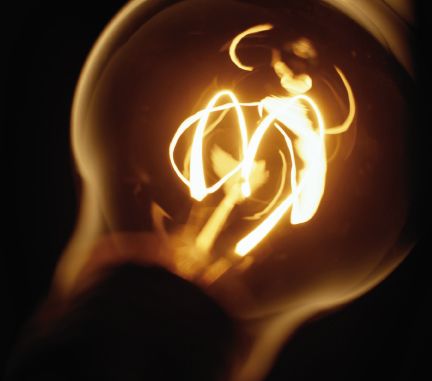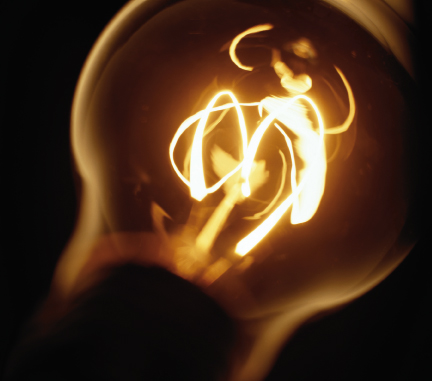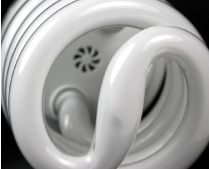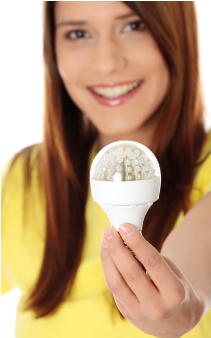Bright Lights, Big Challenge: Tips on Choosing the Right Light Bulbs

 Before we buy our groceries, we know it’s a good idea to read nutrition labels. They tell us what ingredients are included to help us decide what type of fuel we want to put in our bodies to keep us running better and longer. What does this have to do with light bulbs? Well, if you haven’t noticed lately, similar labels have now appeared on the back of light bulb packaging, with the same goal: to help us make better decisions on energy consumption, for more efficient and longer-lasting products.
Before we buy our groceries, we know it’s a good idea to read nutrition labels. They tell us what ingredients are included to help us decide what type of fuel we want to put in our bodies to keep us running better and longer. What does this have to do with light bulbs? Well, if you haven’t noticed lately, similar labels have now appeared on the back of light bulb packaging, with the same goal: to help us make better decisions on energy consumption, for more efficient and longer-lasting products.
As America makes the transition to energy-efficient lighting, technological advances have led to more light bulb options. No longer is there one shelf in our home improvement stores to browse; there are entire aisles. Making sense of all the options can be a challenge. Understanding the new labeling and many options will help you make the best choices for your family’s lighting needs.
 What’s Up With the Watt?
What’s Up With the Watt?
By January 2012, all packaging for the new energy-saving light bulbs should include the new government labels, shining a light on the way we consume products from now on. It’s not only about a change in the way light bulbs are manufactured, but in the way we measure light in general.
We are used to choosing a lightbulb based on the wattage—the measure of electrical power used by the light bulb. But that’s not the case anymore. The new kid on the block is the “lumens”—a measure of the amount of light being produced. The higher the lumens, the brighter the light. Whereas we used to look for a 60-watt bulb, we’re now looking for an 800-lumens bulb. The newer bulbs give us more choices in brightness than ever before.
Along with brightness—the top “ingredient” on the new labels—consumers will also see the estimated yearly energy cost, life expectancy, light appearance (the shade: warmer is more yellow, cooler is more blue) and energy used (this is where “watt” still comes in). And packages for the newer, energy-saving bulbs will clearly show which bulb to buy to replace your common incandescent light bulb but with comparable brightness.
New U.S. energy-efficiency requirements will be phased in over the next two years, basically requiring bulbs to operate on at least 25 percent less energy. The old traditional bulbs won’t be banned; they just must meet a basic level of efficiency. (You will still be able to buy traditional bulbs for certain appliances, including heat lamps, aquarium bulbs and candelabras, as well as different colored lights).
But the savings alone may convince you to make the switch. According to the U.S. Department of Energy, “the new energy-saving light bulbs—incandescents, CFLs (compact fluorescent lamps), and LEDs (light-emitting diodes)—could save you about $50 per year when you replace 15 traditional incandescent bulbs in your home.”
The U.S. Department of Energy explains the new standards and offers many tips at www.energysavers.gov.
 Shining Bright
Shining Bright
The new energy-saving light bulbs not only give us options to conserve electricity and save on our electric bill, they also offer more options in appearance than ever before. Warm or cool light? Dimmer or brighter?
The LUMEN Coalition (Lighting Understanding for a More Efficient Nation), a group of organizations and professionals seeking to educate consumers on new energy-saving lighting products and their applications, has a wonderful tool on their website (lumennow.org) that can help you choose the right bulbs for the right fixtures inside and outside your home. In an interactive online room, you can click on an appliance and “create your mood” by adjusting brightness and color temperature—soft white, bright white or daylight—along with a dimming option. As you make each adjustment, information pops up to guide you to which type of energy-saving light bulb is best. More information on that particular type can be found by clicking on a picture of that light bulb at the bottom of the screen.
Click on the ceiling fixture, for example, and it will tell you to choose a “spiral” (the most popular CFL) or “tubed” bulb (straight versions of the spiral bulbs), and will also give you tips on using a three-way and dimmable CFL. (By the way, check the packaging for these options before you buy, because not all CFLs offer these options).
If you click on a ceiling fan light, it will suggest A-shape or candle options, “great for people who don’t like the look of the spiral bulbs but still want efficient lighting,” it reads. Globe bulbs were also created for this purpose, as you will learn if you click on a pendant fixture over a kitchen bar area. Covered CFLs like this may take extra time to warm up and reach brightness, however.
If you click on an outdoor fixture, the site will tell you spirals are fine to use outdoors, as long as they are in a closed fixture where the weather cannot affect them. For colder temperatures, it warns, “check the packaging for starting temperatures to make sure the bulb will work properly.”
Change isn’t always easy, but once you try the new energy-saving light bulbs, it may lead to a whole new look for your home. And hopefully, when it comes to light bulb options, you’ll no longer feel left in the dark.
MAIN TYPES OF ENERGY-EFFICIENT BULBS
HALOGEN INCANDESCENTS:
These look like traditional lightbulbs, but use an average of 25 to 30 percent less energy and can last up to three times longer. Their color and brightness will be similar to the old versions, but they are less efficient and have shorter life-expectancies than CFLs and LEDs.
COMPACT FLUORESCENT LAMPS (CFLS):
These are the most popular, mainly because they have become the most economical. They use about 75 percent less energy than standard incandescent bulbs and last up to 10 times longer. They also produce about 75 percent less heat.
LIGHT-EMITTING DIODES (LEDS): These are on the cutting edge of technology. Also using at least 75 percent less energy than the traditional everyday light bulb, LEDs can last up to 25 years. What are they? According to the LUMEN Coalition, “unlike fluorescent and incandescent lamps, which involve glass enclosures, filaments, coatings and gases, LEDs are comprised of either single or multiple semi-conducting chips typically 7 to 9 mm in size that can produce 30 to 150 lumens each (up to 4 watts). Commonly seen as the red flashing light on your Blackberry, light bulb forms offered for your home are multiple LEDs mounted on a circuit board and attached to a bulb design.” It has been said that you can put an LED bulb in your newborn baby’s nursery and not have to change it until she graduates from college.
Source: LUMEN Coalition, lumennow.org






